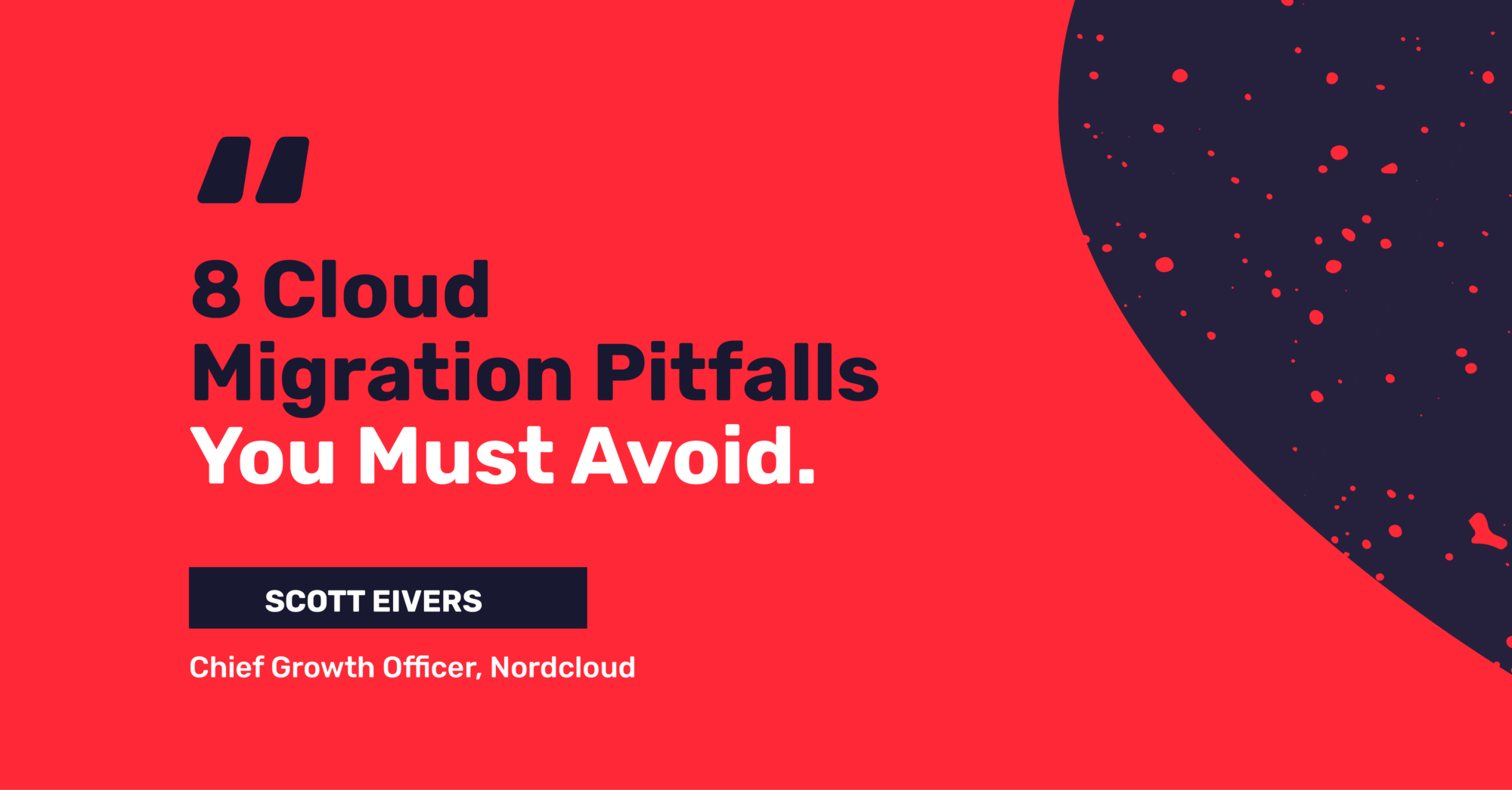
8 Cloud Migration Pitfalls You Must Avoid
- 1: Getting mired in analysis paralysis
- 2: Discovering your partner doesn’t really do automation
- 3: Falling for the cloud capex myth
- 4: Realising you haven’t accurately accounted for the cost of cloud vs on-premises
- 5: Forcing cultural adoption
- 6: Starting with the wrong workloads/applications
- 7: Getting stuck in Hybrid Hell
- 8: Incurring high real and opportunity costs by doing it fully in-house
- To avoid these 8 migration pitfalls, you need the right migration approach
Rising blood pressure and exasperated colleagues. Delayed value and mounting costs. Even when you start with the best intentions, the wrong cloud migration approach can lead to situations when you want to bang your head against the desk in frustration.
As you plan and steer your organisation’s cloud migration, beware of these 8 scenarios that cause unnecessary aggravation.
1: Getting mired in analysis paralysis
Yes, you need to plan for your cloud journey and understand what your destination looks like. But that doesn’t need to take months. The longer you drag out the planning – and the more you pay for consultancy – the longer it takes to start getting value from your investment.
You don’t need to pre-determine everything for the entire migration lifecycle. In any case, things change as you start untangling dependencies and experimenting with cloud. Make agility your watch-word, so you maintain focus on your destination but can adapt as you learn.
2: Discovering your partner doesn’t really do automation
Automation is critical to achieving agility and cost savings with the cloud. But most traditional system integrators have little to no established automation capability (and can take months to get it in place). This is because they generally have less than 10% public cloud workload penetration, meaning their processes are optimised for manual, legacy data centre-type delivery.
Make sure automation capabilities are part of your procurement process. Make sure your partner has established, automation-driven tools and processes to speed up cloud migration, host operations and managed services. We’re talking everything from automated landing zones to patch and back-up automation.
3: Falling for the cloud capex myth
Cloud involves capex, and stakeholders need to realise that quickly. Yes, you’re moving to a consumption-based model and you ultimately won’t have such high hardware costs. But there’s still capex involved in the migration itself.
The question is: do you want to pay that capex upfront or do you want to amortise it?
Maybe your migration aligns with hardware refresh cycles, and it’s easy to reallocate that budget for an upfront payment. But you may be better off spreading that capex out as opex over your monthly managed services commitment (as with Managed Cloud Migration), so you eliminate that financial risk by aligning investment with value.
4: Realising you haven’t accurately accounted for the cost of cloud vs on-premises
We’ve just debunked the myth that there’s no capex with cloud. The other myth we must address is that cloud is automatically cheaper than on-prem.
Cloud gives you agility, scalability and innovation velocity that can ultimately help the business boost revenue and profitability. But it doesn’t spontaneously reduce your IT bills. To get the savings, you need managed services – for continuous capacity and landscape optimisation.
Then, when you have that ongoing optimisation, you also have to remember (and remind stakeholders) that it’s about aggregated savings. Some apps and workloads may be more expensive in the cloud, but overall you’re in a stronger financial and competitive position.
5: Forcing cultural adoption
Making the most of cloud requires cultural change, no question. But don’t make agile/DevOps adoption a pre-condition to getting on with migration. The reality is that some people won’t want to adapt. Others will dive straight into cloud training. And others will want to see how the initial proofs-of-concept go.
Think of upskilling and cultural change as a series of POCs, not a major transformation. That way, you can empower people as you progress – and ensure blockers don’t hold up value delivery.
6: Starting with the wrong workloads/applications
They’re common scenarios. Migration stalls because people are stuck unravelling a complex, monolithic application. Legacy ways of working mean apps aren’t realising their TCO/value potential in the cloud. People losing faith because of teething problems with newly migrated workloads.
There’s a lot riding on how you prioritise workloads and applications for migration. So don’t rely on factors like age and cost. Instead, choose a pilot that delivers maximum business value with minimum cost and risk. (Get more tips on choosing your POC in this migration planning guide.)
7: Getting stuck in Hybrid Hell
In an ideal world, you’d be able to flip a switch to move from on-prem to cloud. But you can’t. With a standard migration approach, there’s a hybrid period where you’re partially in the cloud and partially in your data centre. This has many operational and financial challenges – from dual running costs to growing backlogs.
Don’t sleepwalk into this situation. If you’re going to have a hybrid period, plan for it with your partner. If you want to circumvent it, take a Managed Cloud Migration approach, where you have a managed landing zone and workloads/applications are cloud-ready in days.
8: Incurring high real and opportunity costs by doing it fully in-house
The assumption is that managing applications/workloads yourself is the cheapest approach, especially if you’ve invested in training and recruitment. 9 times out of 10, it’s a false assumption – and having an external partner ends up cheaper.
Why? On the one hand, if you manage yourself, you need to overhaul your operating model to ensure you’re achieving your value potential from cloud. That is time-consuming and expensive at the best of times. It’s even worse if you’re stuck in Hybrid Hell and need one team to manage cloud and another to manage on-prem.
On the other hand, you’re introducing major opportunity costs. Devoting IT resource to management means you’re taking resource away from development and innovation. You’re bogging people down with tasks that can be automated when you work with experienced partners who have the right tooling.
To avoid these 8 migration pitfalls, you need the right migration approach
That approach needs to balance quick wins, immediate cost savings and long-term value. It needs to facilitate cloud-enabled ways of working. And it needs to minimise risk.
Get in Touch.
Let’s discuss how we can help with your cloud journey. Our experts are standing by to talk about your migration, modernisation, development and skills challenges.





